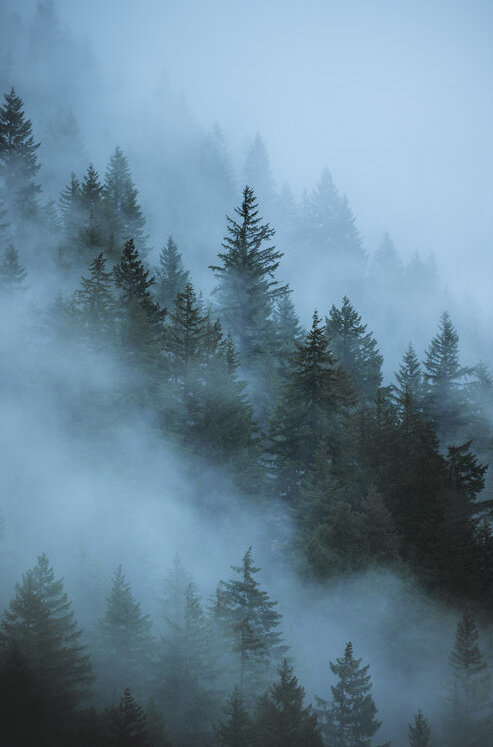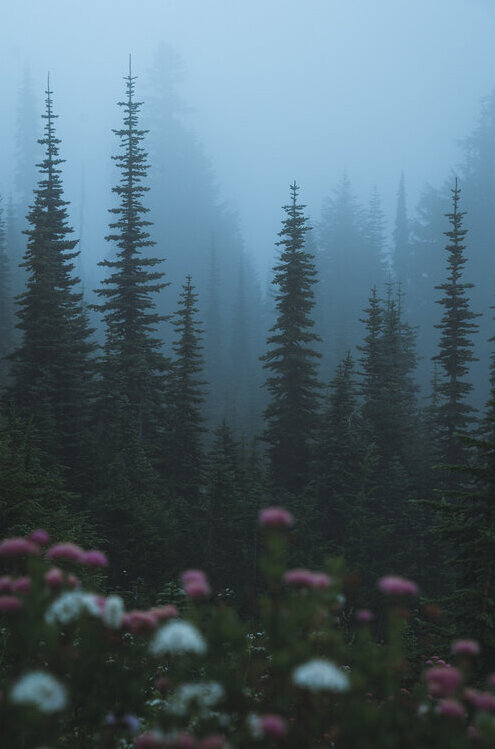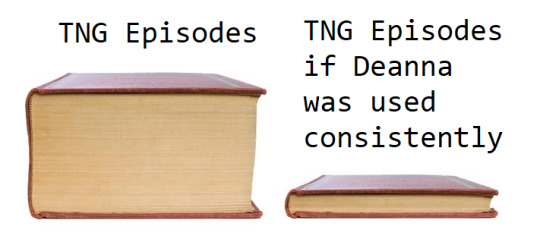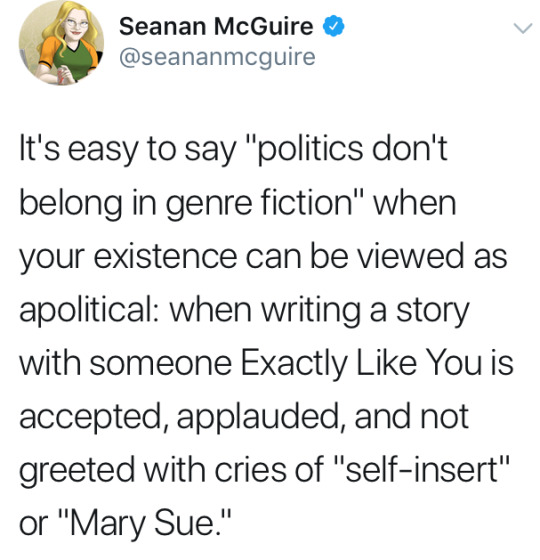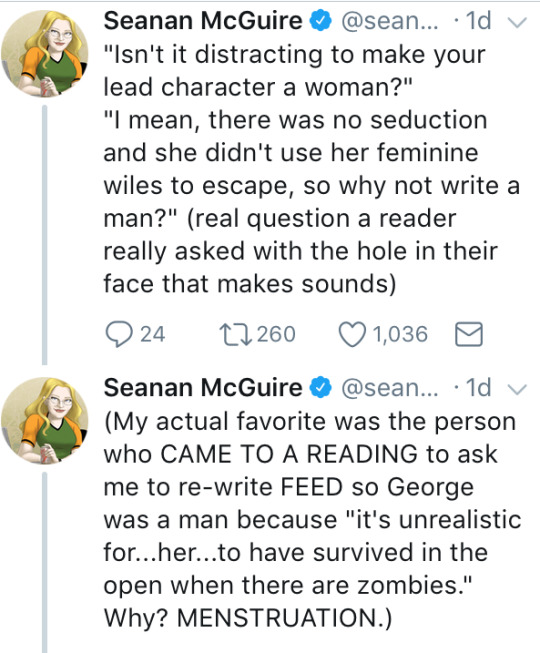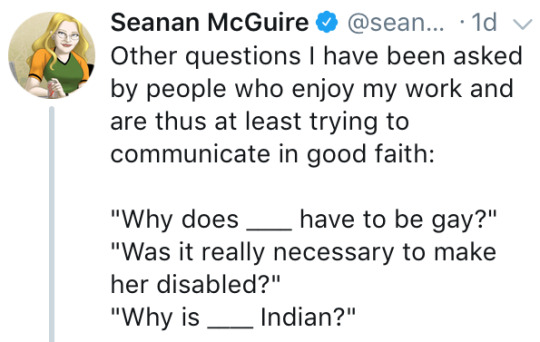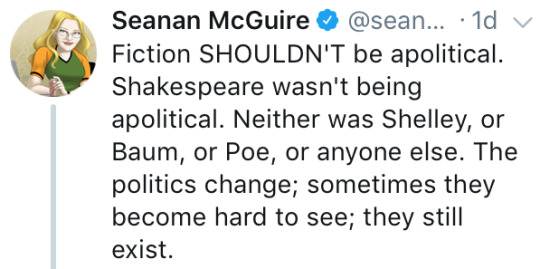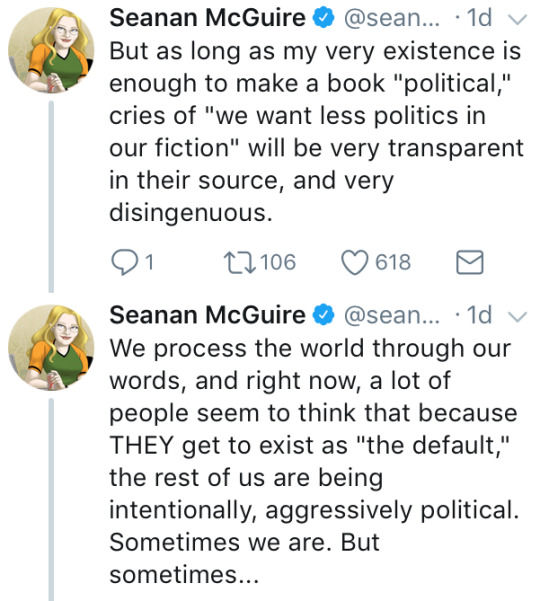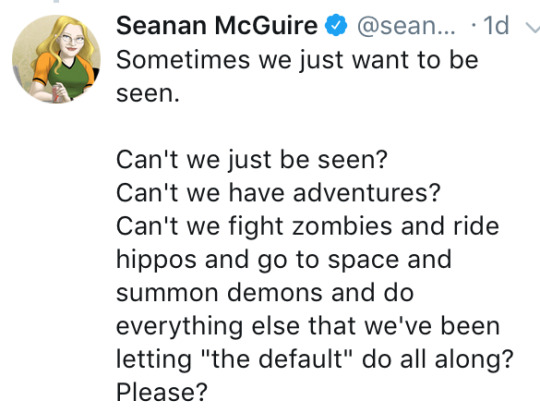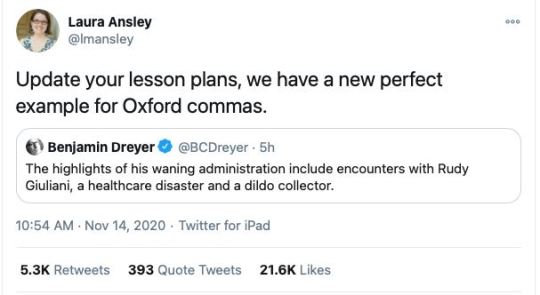Don't wanna be here? Send us removal request.
Text
The Pelle/Dani Receipts, Post Twelve: Runes
Big, huge Hårga hugs and thanks again to @daydreamers for expertise and editing on this post!
So. Runes. Specifically, the Elder Futhark runes, as Pelle tells Dani in the Director’s Cut, the “special little language” of the Hårgans. Throughout the film, runes are insinuated into basically every surface of Hårga and its people. So many tattoo opportunities, y’all. And it doesn’t even technically start in Sweden. Ari stuck a board featuring the whole Elder Futhark alphabet in Christian and Mark’s apartment. You can see it on the bookcase to Pelle’s right in the couch scenes. So, the film’s usage of the Elder Futhark is a deep, deep rabbit hole full of all the multivalent subtext we crave from this film, but they’re also absolutely blaring evidence for the Dani/Pelle ship. Throughout the film, like many of the background details we’ve discussed, the runes serve as a repetitive chorus of their fatedness for each other, but better still, the runes footnote the film’s ambiguous resolution as their genuine happy ending. So let’s dig in.
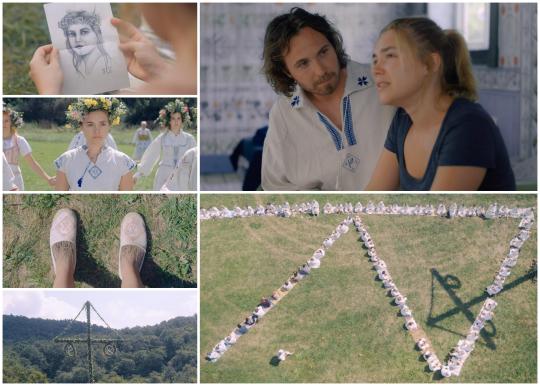
Dani has two main runes associated with her, Raidho and Dagaz, and they are both merkstave versions, that is backwards, lending them a negative reading. Oooooh, scary. Except negative readings aren’t necessarily negative either. All runic readings are subjective and contextual, which is why we decided to talk about these last. Let’s not forget that Dani begins the movie at the bottom of an emotional well.
Raidho, literally ride or wheel, refers to a journey. Yeah, Dani’s on one of those, seems legit. This is the only rune that Ari takes care to point out the meaning of within the film itself, when the elder Arne shows the Rubi Radr to Josh, pointing to Raidho on its side and telling him that that one stands for grief. Grief is a legitimate reading of Raidho merkstave, so let’s just take that interpretation at Arne’s word and combine it with Dagaz, Dani’s second rune.
Dagaz is the last rune in the Elder Futhark, and it means day, symbolizing accomplishment, fulfillment, and new beginnings. As a symmetrical rune, it’s questionable whether it can be merkstave, but Dani’s Dagaz rune (technically runes, as she also has them on her shoes) does lie in opposition. Its negative reading in that case would be hopelessness, blindness, or cataclysmic change. Not fairytale stuff, right?
But Raidho and Dagaz appear together on Pelle’s drawing and on Dani’s dress. Also note that runic inscriptions are read right to left, and the tapestry of the “little love story” is an in-film clue to that reading order. With that in mind, together Raidho merkstave and Dagaz merkstave tell of a big change, even an ending, yes, but an ending to Dani’s grief, and that is what her journey in this film describes. Here, two “negative” readings equal out to a positive in the sense of Dani’s ultimate growth and transcendence. But wait, there’s more.
You will notice the runes on the Hårgans’ clothing, of course, as though they are their personal cult cutie marks, but the embroidered runes are often surrounded by other symbols, esoteric symbols and more complex runic talismans, which deepen the reading of the central rune, like footnotes. In Dani’s dress example, Raidho and Dagaz are flanked by merkstaved Tiwaz runes, with sun symbols above and below. Tiwaz (literally “the god Tyr,” the god of law and justice) is one of the runes featured on Christian’s robe during the sex ritual, and it describes justice, honor, authority, self-sacrifice. Its merkstave meaning then reads as conflict, imbalance, lack of communication…separation. And so, in the specific context of the dance competition, while Dani’s main runes shown in Pelle’s drawing forecast (or possibly straight-up spellcast, depending on your interpretation) an end to her grief, the more complex version she wears for the dance tells of that happening through a conflict and a break…but the sun will come out tomorrow, tomorrow. It is a new dawn for Dani as the May Queen.
Her shoes, which we only see during the dance, are more complicated. First, the embroidery is done in faded red thread, and we know that red appears very selectively on Hårgan garments. Siv wears a ton of red throughout the festival. Maja and Inga also wear striking red additions to their costumes at the Fire Temple ceremony. Ingemar has a single red button on his waistcoat. So red may convey authority, fertility, sacrifice, or even be a brand of shame, but it always seems to mean something.

As for the symbols on her shoes, again we see the merkstave-ish Dagaz rune, but it is alone in the center, no Raidho. So we’re looking at a big change or an ending again. Instead of suns, we have snowflakes, recalling the Spoiler Tapestry in the beginning, the way it began in frosty dark death skullhead weather and ends in summer dinner and dancing beneath the scariest sun since Teletubbies. To the right, we have a bind of three Tiwaz runes, and to the left, we have an Ingwaz (seed) rune, combined with a merkstave Kenaz. The triple Tiwaz is a victory rune, taken from an Old Norse poem where a Valkyrie was woken from her slumber. Three is a holy number, and that’s definitely something we know the 9-multiple-loving Hårgans pay attention to. This rune means the sleeper Dani is about to be awoken through a victory. Meanwhile the Ingwaz rune refers to coming into harmony and reaching potential. It’s also a fertility rune. Kenaz (torch) is a rune that normally describes transformation, knowledge, and the harnessing of light; merkstave, it speaks to darkness, lack of illumination and a relationship breakdown. Taken together, reading right to left, Dani’s shoes basically say: there will be a great change where she will be awoken from her slumber through a victory, she will have a breakup and/or her illusions will be shattered, but that will bring her ultimately into harmony, and there is the added implication of her fertility, bolstered by the red thread, being part of this. THAT IS ON HER SHOES.
For what it’s worth, you will also notice Hanna wearing Dagaz in opposition, like Dani, and the elder Sten wears a merkstave Raidho, in yellow no less. You can peep merkstave Raidho and Dagaz elements on the temple doors, too. So even if you eschew our deep dive here, these runes cannot be looked at superficially, as merkstave = bad = Dani doom. If Dani’s doomed, so is Sten and Hanna and the whole damn Hårga, and you may think that, but it’s not terribly likely they’d write it on themselves, is it? Sten doesn’t look doomed to us. Sten looks quite jolly, actually.
OK, time to obsess on Pelle. Pelle has one rune on his Hårgan tunic that he wears for the majority of the film, Fehu, and this seems more straightforward. Fehu means wealth, specifically mobile wealth, specifically cattle. As we mentioned earlier: moo, Dani; moo, sacrifices. And since Pelle’s the one bringing new blood and their new queen, the association of Pelle with prosperity is quite fitting. Add to that the way Fehu and Raidho tend to pop up all over the village, particularly on the maypole. The maypole combination of Raidho (not merkstave) and Fehu speaks to the way the Hårgans believe the dance around the maypole enacts (and reenacts) a ceremony that brings them prosperity, and having Dani and Pelle as Raidho Barbie and Fehu Ken is just kind of perfect in that light.
Pelle’s Fehu is surrounded by four symbols. Let’s have a crack at those, too. First we have what looks like a closed eye up top. At the bottom, we have a cross. The cross is not actually a cross; it’s a combination of four Isa (ice) runes, and we know this because there are four dots arranged around them, telling us, hey, these are four symbols not one. Then to the right, we have another talisman that looks like a crucified diamond with five dots. Again, the dots mean that these are individual runes drawn as one symbol as a kind of shorthand, so this symbol is actually Ingwaz again, quartered by four Isa runes. Finally, to the left, there is another Isa rune crossing a Tiwaz, and the absence of dots here means that they are a bind, or they are meant to be read as one thing (or are a spell for one thing).
The closed eye symbol is a bit of a guess here; it might represent Pelle’s unclouded intuition or maybe, in view of Dani’s suns and the association of Raidho with the summer solstice, it is meant to symbolize Fehu’s complementary association with the winter solstice. We prefer the association with his intuition given the events of the film. But what about the other symbols? Isa is a rune that describes the self or the ego. On the positive side, it is about will and focus, but on the other side, it is everything bad about ice: rigidity, blindness and self-preoccupation, being frozen. Again, symmetrical runes like Isa don’t merkstave, but they can lie in opposition, and so we have two pairs of Isa indicating, at the right, self-fulfillment, with the added implication of fertility, and coming into unity with the family after the will breaks through the metaphorical ice. At the bottom it is the same reading, only without Ingwaz. Will and self-control overcomes lassitude. And then again, one last time, Tiwaz crossed with Isa, read as one thing, not a series like the previous shorthand symbols, invoking justice and male energy to, again, break through the metaphorical ice. Taken together, it’s a formula for Pelle and the family’s triumph. Governed by his unclouded intuition, Pelle’s will overcomes that of his four differently-blind friends, bringing new blood and justice and unity with the family for the betterment of all, and the two breaks in the rightmost configuration carry the added implication of Pelle bringing into the family Christian’s and Dani’s new blood.
Finally, as discussed briefly in posts 10 and 11, Pelle changes his shirt on the morning of the dance competition, swapping Fehu for Wunjo (joy). There do appear to be a couple flanking symbols on this shirt, too, but we never get close enough to see, so we’ll just have to go with Wunjo’s face value. Again, this is the rune that emphasizes harmony, family, and the art of correct wishing, i.e. wanting (and getting) what is good for you. Pelle wearing Wunjo when he kisses Dani is a sign that he, the anti-Christian if you will, is her wish come true. This choice is not only incredibly positive for his relationship with Dani, but illustrative that there is a difference between Dani/Pelle and Dani/Hårga by virtue of the fact that he changes back into the Fehu shirt for the Fire Temple ceremony. Insofar as Dani is part of the family after the ceremony, the prosperity spelled on his Fehu-emblazoned tunic applies to her, too, but the Wunjo shirt is for her and for her victory…and his victory over Christian for her sake. The implication is that their story will not simply end with Dani assimilated into Hårga. They have special, personal significance for each other. While the ending shots of the film are a little ambiguous, the runes promise the May Queen and her consort are going to be just fine, y’all.
Again, would you like to see our fanfics?
Of course, there’s tons more to explore in the film that doesn’t speak specifically to Dani and Pelle’s love story, and even while we compiled this list, we were continually noticing and discovering the significance of new things. There’s no reason to think that will stop just because we’ve posted the Receipts. Still, we hope that you will enjoy the evidence we have compiled here for not only the legitimacy of the Dani/Pelle ship, but its promise of a happy ending for the OTP because, by Ari’s own admission, for better or worse, Midsommar is a wish fulfillment fantasy.
For more, click on The Pelle/Dani Receipts Masterpost
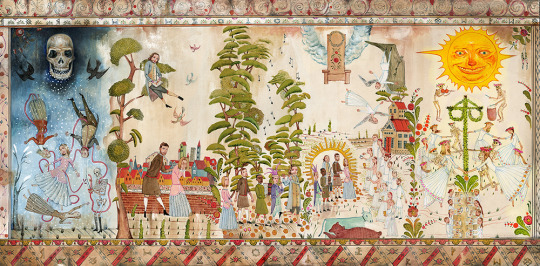
#thepelledanireceipts#pelle/dani#dani/pelle#pelle x dani#dani x pelle#pellani#midsommar#archive post
207 notes
·
View notes
Photo
I, for one, cannot WAIT for Alan Rickman’s diaries to come out next year.
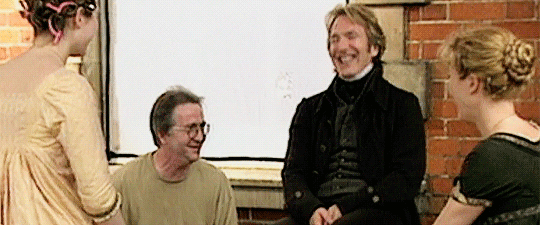
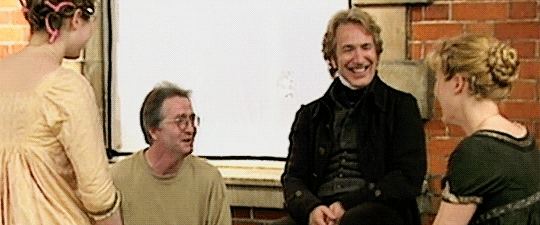
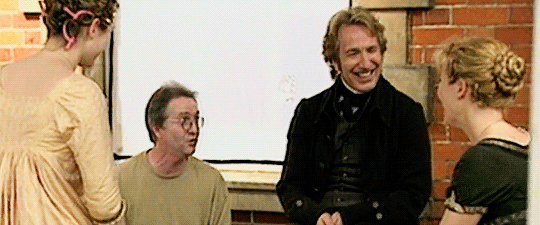
Alan Rickman behind the scenes of Sense and Sensibility [1995]
5K notes
·
View notes
Photo
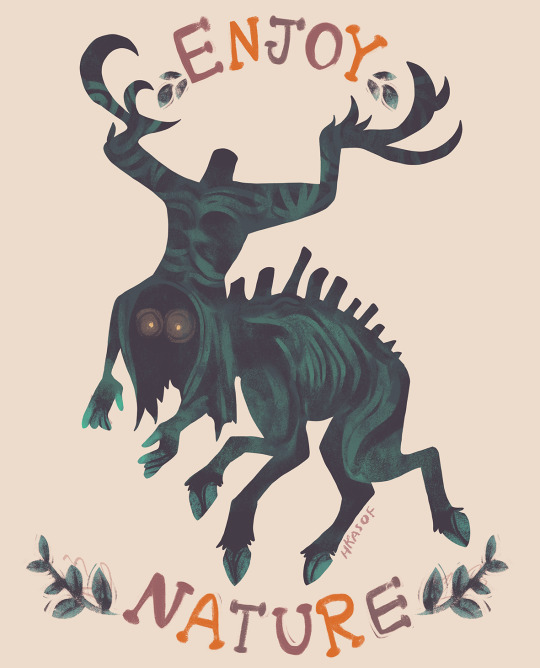
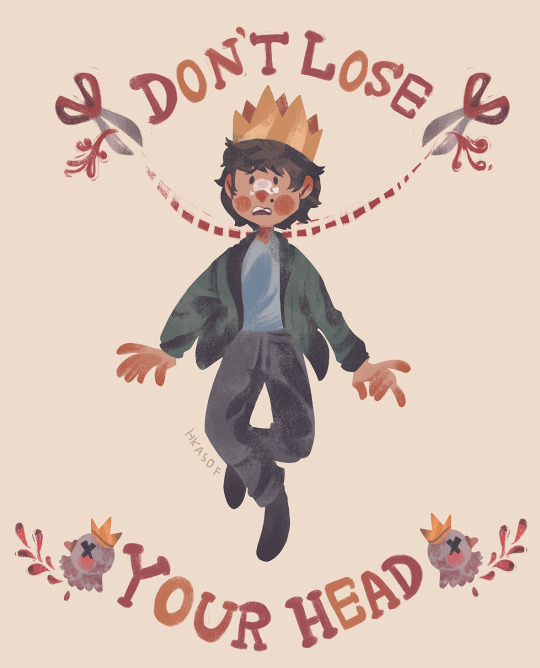



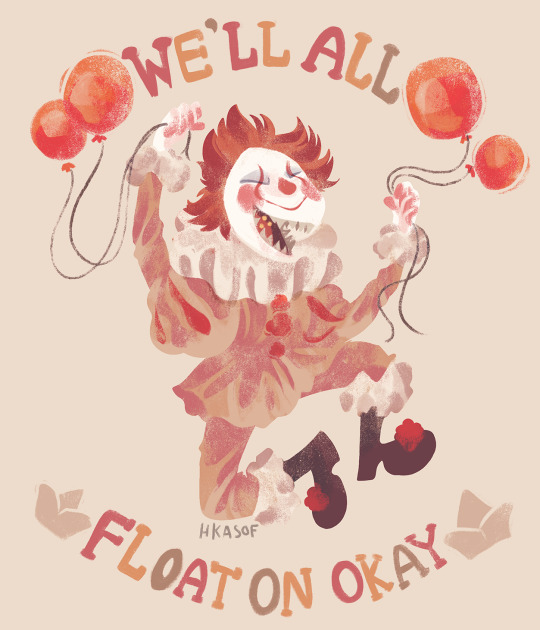
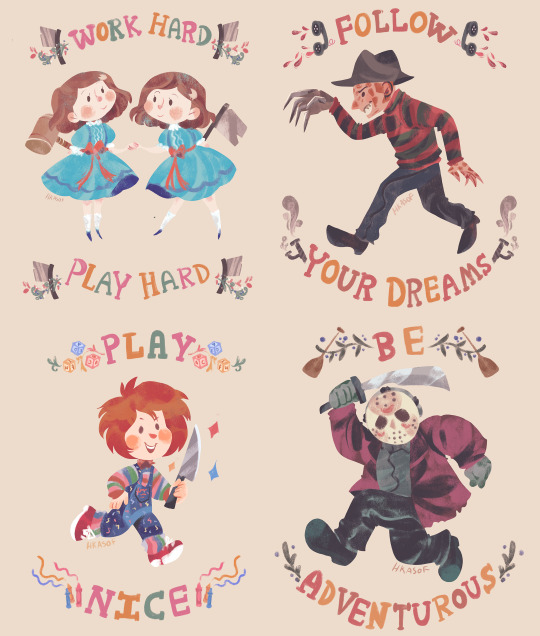

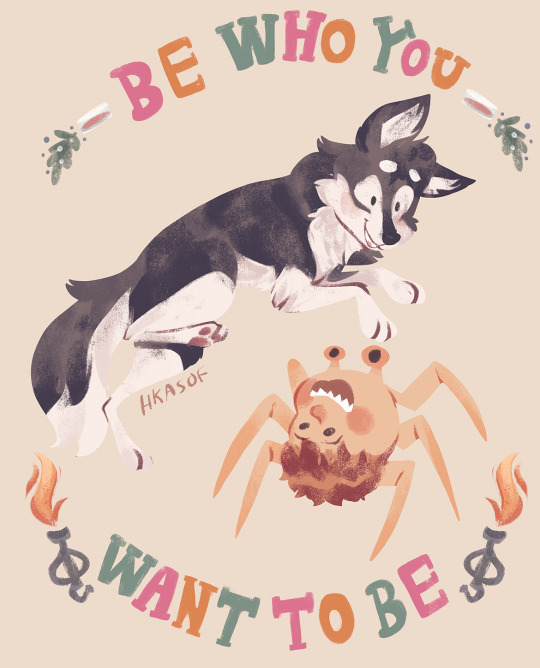

It took a few months, but my positive horror series is finally finished! A silly little project I started late September ended up with 14 images and rekindling my love of horror!
And as always, these designs can be purchased as stickers, prints, bags, pillows and more on my Redbubble store!
60K notes
·
View notes
Photo

Mareridt / Nightmare (Detail), 1846 - Ditlev Blunck
20K notes
·
View notes
Photo
♥️♥️♥️
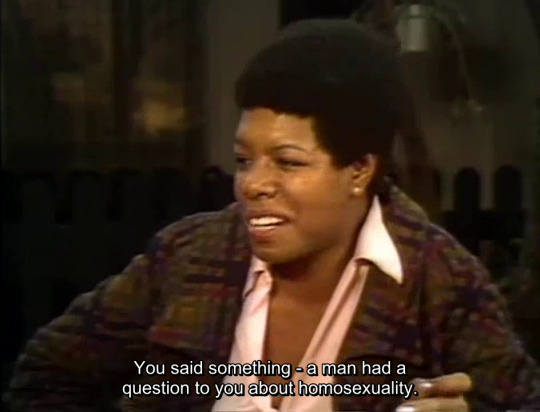

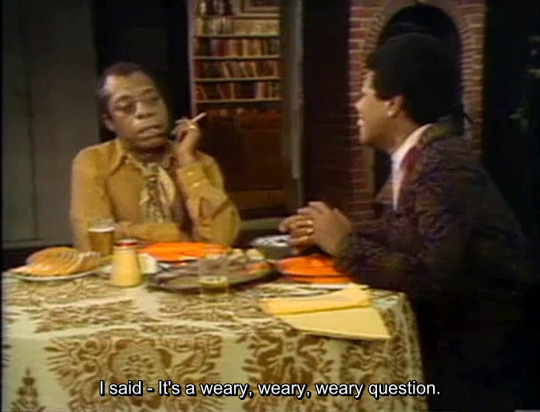
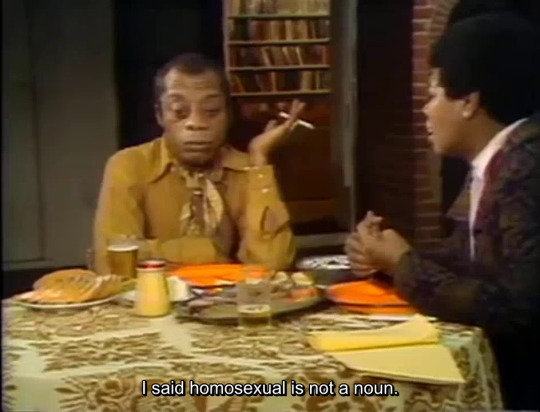
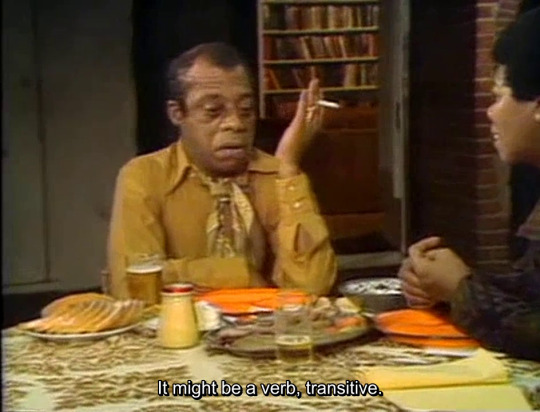

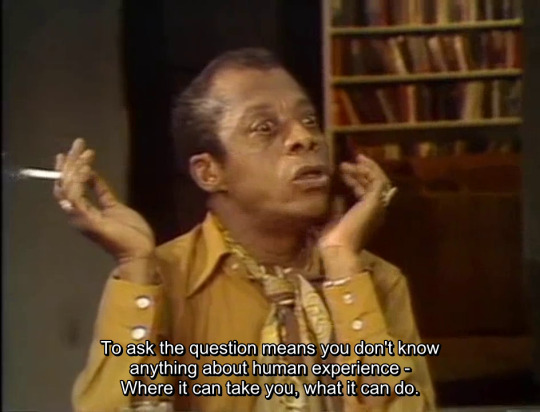
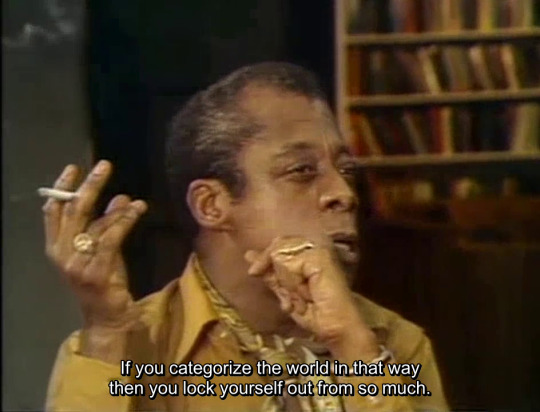
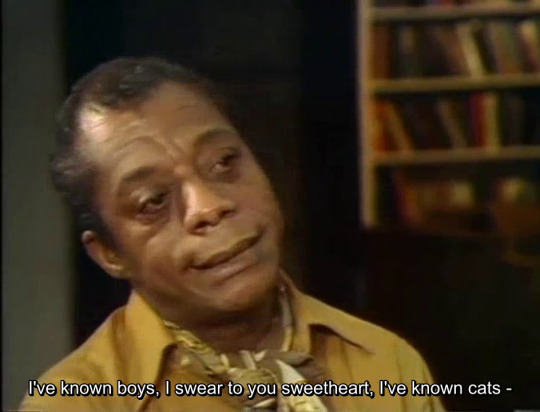


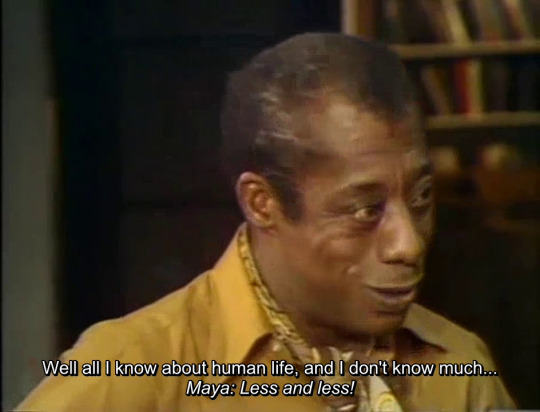
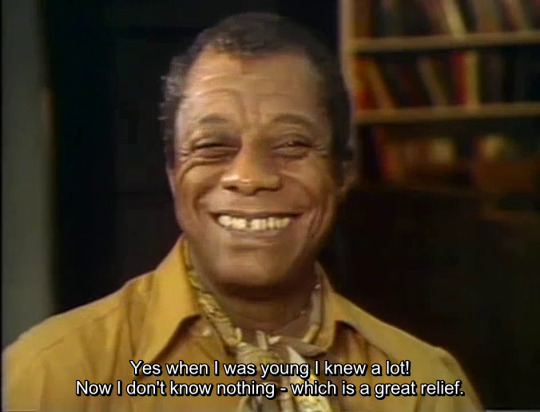


Conversation with a Native Son: Maya Angelou and James Baldwin
148K notes
·
View notes
Video
60K notes
·
View notes
Text
Texas. Open because 4YO.
wait people sleep with their doors closed????
249K notes
·
View notes
Text

The fossil is not the animal.
The fossil is not the bones of the animal.
The fossil is the stone’s memory of the bones of the animal.
And that’s a poetry older than words.
21K notes
·
View notes
Photo
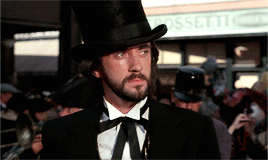
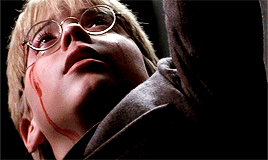





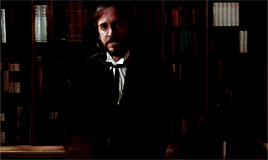
Something Wicked This Way Comes (1983) dir. Jack Clayton
“Yes, we are the hungry ones. Your torments call us like dogs in the night. And we do feed, and feed well.”
404 notes
·
View notes
Text
The Pelle/Dani Receipts, Post Twelve: Runes
Big, huge Hårga hugs and thanks again to @daydreamers for expertise and editing on this post!
So. Runes. Specifically, the Elder Futhark runes, as Pelle tells Dani in the Director’s Cut, the “special little language” of the Hårgans. Throughout the film, runes are insinuated into basically every surface of Hårga and its people. So many tattoo opportunities, y’all. And it doesn’t even technically start in Sweden. Ari stuck a board featuring the whole Elder Futhark alphabet in Christian and Mark’s apartment. You can see it on the bookcase to Pelle’s right in the couch scenes. So, the film’s usage of the Elder Futhark is a deep, deep rabbit hole full of all the multivalent subtext we crave from this film, but they’re also absolutely blaring evidence for the Dani/Pelle ship. Throughout the film, like many of the background details we’ve discussed, the runes serve as a repetitive chorus of their fatedness for each other, but better still, the runes footnote the film’s ambiguous resolution as their genuine happy ending. So let’s dig in.

Dani has two main runes associated with her, Raidho and Dagaz, and they are both merkstave versions, that is backwards, lending them a negative reading. Oooooh, scary. Except negative readings aren’t necessarily negative either. All runic readings are subjective and contextual, which is why we decided to talk about these last. Let’s not forget that Dani begins the movie at the bottom of an emotional well.
Raidho, literally ride or wheel, refers to a journey. Yeah, Dani’s on one of those, seems legit. This is the only rune that Ari takes care to point out the meaning of within the film itself, when the elder Arne shows the Rubi Radr to Josh, pointing to Raidho on its side and telling him that that one stands for grief. Grief is a legitimate reading of Raidho merkstave, so let’s just take that interpretation at Arne’s word and combine it with Dagaz, Dani’s second rune.
Dagaz is the last rune in the Elder Futhark, and it means day, symbolizing accomplishment, fulfillment, and new beginnings. As a symmetrical rune, it’s questionable whether it can be merkstave, but Dani’s Dagaz rune (technically runes, as she also has them on her shoes) does lie in opposition. Its negative reading in that case would be hopelessness, blindness, or cataclysmic change. Not fairytale stuff, right?
But Raidho and Dagaz appear together on Pelle’s drawing and on Dani’s dress. Also note that runic inscriptions are read right to left, and the tapestry of the “little love story” is an in-film clue to that reading order. With that in mind, together Raidho merkstave and Dagaz merkstave tell of a big change, even an ending, yes, but an ending to Dani’s grief, and that is what her journey in this film describes. Here, two “negative” readings equal out to a positive in the sense of Dani’s ultimate growth and transcendence. But wait, there’s more.
You will notice the runes on the Hårgans’ clothing, of course, as though they are their personal cult cutie marks, but the embroidered runes are often surrounded by other symbols, esoteric symbols and more complex runic talismans, which deepen the reading of the central rune, like footnotes. In Dani’s dress example, Raidho and Dagaz are flanked by merkstaved Tiwaz runes, with sun symbols above and below. Tiwaz (literally “the god Tyr,” the god of law and justice) is one of the runes featured on Christian’s robe during the sex ritual, and it describes justice, honor, authority, self-sacrifice. Its merkstave meaning then reads as conflict, imbalance, lack of communication...separation. And so, in the specific context of the dance competition, while Dani’s main runes shown in Pelle’s drawing forecast (or possibly straight-up spellcast, depending on your interpretation) an end to her grief, the more complex version she wears for the dance tells of that happening through a conflict and a break...but the sun will come out tomorrow, tomorrow. It is a new dawn for Dani as the May Queen.
Her shoes, which we only see during the dance, are more complicated. First, the embroidery is done in faded red thread, and we know that red appears very selectively on Hårgan garments. Siv wears a ton of red throughout the festival. Maja and Inga also wear striking red additions to their costumes at the Fire Temple ceremony. Ingemar has a single red button on his waistcoat. So red may convey authority, fertility, sacrifice, or even be a brand of shame, but it always seems to mean something.

As for the symbols on her shoes, again we see the merkstave-ish Dagaz rune, but it is alone in the center, no Raidho. So we’re looking at a big change or an ending again. Instead of suns, we have snowflakes, recalling the Spoiler Tapestry in the beginning, the way it began in frosty dark death skullhead weather and ends in summer dinner and dancing beneath the scariest sun since Teletubbies. To the right, we have a bind of three Tiwaz runes, and to the left, we have an Ingwaz (seed) rune, combined with a merkstave Kenaz. The triple Tiwaz is a victory rune, taken from an Old Norse poem where a Valkyrie was woken from her slumber. Three is a holy number, and that’s definitely something we know the 9-multiple-loving Hårgans pay attention to. This rune means the sleeper Dani is about to be awoken through a victory. Meanwhile the Ingwaz rune refers to coming into harmony and reaching potential. It’s also a fertility rune. Kenaz (torch) is a rune that normally describes transformation, knowledge, and the harnessing of light; merkstave, it speaks to darkness, lack of illumination and a relationship breakdown. Taken together, reading right to left, Dani’s shoes basically say: there will be a great change where she will be awoken from her slumber through a victory, she will have a breakup and/or her illusions will be shattered, but that will bring her ultimately into harmony, and there is the added implication of her fertility, bolstered by the red thread, being part of this. THAT IS ON HER SHOES.
For what it’s worth, you will also notice Hanna wearing Dagaz in opposition, like Dani, and the elder Sten wears a merkstave Raidho, in yellow no less. You can peep merkstave Raidho and Dagaz elements on the temple doors, too. So even if you eschew our deep dive here, these runes cannot be looked at superficially, as merkstave = bad = Dani doom. If Dani’s doomed, so is Sten and Hanna and the whole damn Hårga, and you may think that, but it’s not terribly likely they’d write it on themselves, is it? Sten doesn’t look doomed to us. Sten looks quite jolly, actually.
OK, time to obsess on Pelle. Pelle has one rune on his Hårgan tunic that he wears for the majority of the film, Fehu, and this seems more straightforward. Fehu means wealth, specifically mobile wealth, specifically cattle. As we mentioned earlier: moo, Dani; moo, sacrifices. And since Pelle’s the one bringing new blood and their new queen, the association of Pelle with prosperity is quite fitting. Add to that the way Fehu and Raidho tend to pop up all over the village, particularly on the maypole. The maypole combination of Raidho (not merkstave) and Fehu speaks to the way the Hårgans believe the dance around the maypole enacts (and reenacts) a ceremony that brings them prosperity, and having Dani and Pelle as Raidho Barbie and Fehu Ken is just kind of perfect in that light.
Pelle’s Fehu is surrounded by four symbols. Let’s have a crack at those, too. First we have what looks like a closed eye up top. At the bottom, we have a cross. The cross is not actually a cross; it’s a combination of four Isa (ice) runes, and we know this because there are four dots arranged around them, telling us, hey, these are four symbols not one. Then to the right, we have another talisman that looks like a crucified diamond with five dots. Again, the dots mean that these are individual runes drawn as one symbol as a kind of shorthand, so this symbol is actually Ingwaz again, quartered by four Isa runes. Finally, to the left, there is another Isa rune crossing a Tiwaz, and the absence of dots here means that they are a bind, or they are meant to be read as one thing (or are a spell for one thing).
The closed eye symbol is a bit of a guess here; it might represent Pelle’s unclouded intuition or maybe, in view of Dani’s suns and the association of Raidho with the summer solstice, it is meant to symbolize Fehu’s complementary association with the winter solstice. We prefer the association with his intuition given the events of the film. But what about the other symbols? Isa is a rune that describes the self or the ego. On the positive side, it is about will and focus, but on the other side, it is everything bad about ice: rigidity, blindness and self-preoccupation, being frozen. Again, symmetrical runes like Isa don’t merkstave, but they can lie in opposition, and so we have two pairs of Isa indicating, at the right, self-fulfillment, with the added implication of fertility, and coming into unity with the family after the will breaks through the metaphorical ice. At the bottom it is the same reading, only without Ingwaz. Will and self-control overcomes lassitude. And then again, one last time, Tiwaz crossed with Isa, read as one thing, not a series like the previous shorthand symbols, invoking justice and male energy to, again, break through the metaphorical ice. Taken together, it’s a formula for Pelle and the family’s triumph. Governed by his unclouded intuition, Pelle’s will overcomes that of his four differently-blind friends, bringing new blood and justice and unity with the family for the betterment of all, and the two breaks in the rightmost configuration carry the added implication of Pelle bringing into the family Christian’s and Dani’s new blood.
Finally, as discussed briefly in posts 10 and 11, Pelle changes his shirt on the morning of the dance competition, swapping Fehu for Wunjo (joy). There do appear to be a couple flanking symbols on this shirt, too, but we never get close enough to see, so we’ll just have to go with Wunjo’s face value. Again, this is the rune that emphasizes harmony, family, and the art of correct wishing, i.e. wanting (and getting) what is good for you. Pelle wearing Wunjo when he kisses Dani is a sign that he, the anti-Christian if you will, is her wish come true. This choice is not only incredibly positive for his relationship with Dani, but illustrative that there is a difference between Dani/Pelle and Dani/Hårga by virtue of the fact that he changes back into the Fehu shirt for the Fire Temple ceremony. Insofar as Dani is part of the family after the ceremony, the prosperity spelled on his Fehu-emblazoned tunic applies to her, too, but the Wunjo shirt is for her and for her victory...and his victory over Christian for her sake. The implication is that their story will not simply end with Dani assimilated into Hårga. They have special, personal significance for each other. While the ending shots of the film are a little ambiguous, the runes promise the May Queen and her consort are going to be just fine, y’all.
Again, would you like to see our fanfics?
Of course, there’s tons more to explore in the film that doesn’t speak specifically to Dani and Pelle’s love story, and even while we compiled this list, we were continually noticing and discovering the significance of new things. There’s no reason to think that will stop just because we’ve posted the Receipts. Still, we hope that you will enjoy the evidence we have compiled here for not only the legitimacy of the Dani/Pelle ship, but its promise of a happy ending for the OTP because, by Ari’s own admission, for better or worse, Midsommar is a wish fulfillment fantasy.
For more, click on The Pelle/Dani Receipts Masterpost

207 notes
·
View notes
Text
The Pelle/Dani Receipts, Post 11: The May Queen
The last lap of the film is the culmination of two separate tracks: one, Dani breaking with Christian, coming to terms with her grief, and sloughing off her old life, and two, Dani being embraced by her new family and, with that final, slightly-mad smile, finding joy with them. Much as in the “Do you feel held by him?” scene, Ari masterfully keeps the final scenes of Midsommar walking that tightrope between validating the Pelle/Dani romance and minimizing it in order to center Dani’s broader character arc and story, and to that end, he doesn’t even wobble. Still, he can’t get out of this without some explicit (though not explicit) mushy stuff for the OTP, and that, of course, is why we’re here.
We already mentioned the dance competition in the context of Pelle and Team Hårga winnowing Christian real good so he can be Maja’s baby daddy, but this is yet another opportunity for Pelle to demonstrate to Dani the contrast between him and Christian. As Dani begins to dance, Pelle is right up front, attentively, patiently, smilingly watching. She has every bit of his attention and support. Meanwhile, Christian stumbles into the audience late, burdened and internally roiling after his meeting with Siv.
Now, we don’t know how Christian ultimately answered the Matriarch when she asked if he would mate with Maja. Ari, the imp, cuts away. Not to taint our favorite scene with comparison, but very like Dani’s protests in “Do you feel held by him?” Christian’s evasions, more pronounced in the Director’s Cut (“I’m here with somebody,” “We haven’t even talked.”) are frail, toothless things against the truth joined with temptation. He doesn’t love Dani. And he does want Maja. By the time he comes to watch the dance competition, Dani dancing is the furthest thing from Christian’s mind, even though betraying her is the crux of his dilemma.
And do please remember that Siv proposes this ritual snuggling to Christian as something Dani will not know about, so he really is contemplating betraying her, as opposed to what Pelle suggests to Dani.
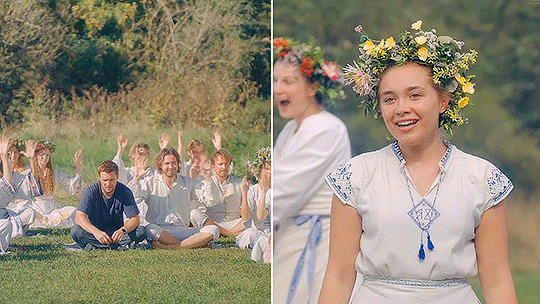
This is the contrast that waits for Dani during a break in the dance. Pelle smiles at her flirtatiously, even proudly, and silently applauds--totally here for you, Dani--while Christian is literally looking the other direction, back towards where Maja--oops, I got myself eliminated, teehee!--has taken her seat. During the dance, Dani is, yes, tripping balls and speaking gibberish, but she is still having the best time ever. So, initially exhilarated, Dani wilts the moment she sees Christian, and if we were going to argue that Dani doesn’t reciprocate Pelle’s feelings, the visible heartbreak on her face here would be Exhibit A. Except people are more complicated than that. Relationships are more complicated than that. Dani is definitely more complicated than that. Letting go still can hurt long after you know it’s over.
All that being said, even the most complicated relationship stuff can get simple real quick with a grand, unambiguously romantic gesture, and as Dani is crowned May Queen, finally, finally, finally, we get one. No evasions, no apophasis. Stunned, still kind of high, Dani’s new family washes her away in a tide of congratulations. Odd welcomes her home again, in Swedish this time, and it’s just a lovebomb lovefest all the way down. The only ones who don’t hug and/or paw at Dani are hallucinations (or are they) of her parents in Hårgan garb, her mom laying one surrendering caress on Dani’s shoulder as she passes by, and, of course, Christian, poor dope, standing by the maypole, looking every bit as alone and lost as Dani probably has felt up to this point. The Fire Temple is a ways off, but he will never again be allowed close to her. They are over.
At the end of the procession, for maximum dramatic effect, Dani’s happy Hårgan sisters tilt her toward OHAI PELLE. As Pelle bends down to her, initially he appears to be in supportive friend mode, (“My God, Dani! May Queen!”), but then he just sweeps Dani up in a kiss that isn’t long enough to stop the ceremony, but just long enough to be undeniably romantic. In the script, the kiss is actually described as a “blunt, passionate kiss.” While so much of the Pelle/Dani ship is not scripted, here it is plain: Pelle, now wearing the Wunjo rune, is Dani’s wish for an understanding, loving partner come true, and for the minute she can be spared from the procession, he is kissing her for all he’s worth. Let’s just watch this on a loop for a while.
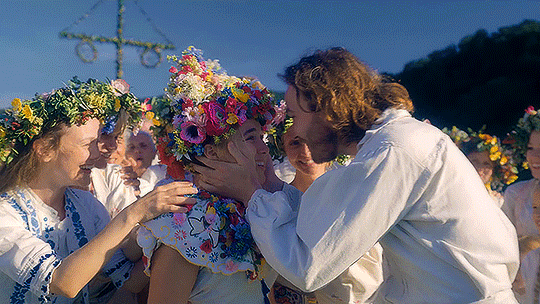
This is the moment that has launched several thousand “Did Pelle like Dani?” Google searches, and it looks like a freaking wedding because it kind of is. Look at all the Hårgans bursting with happiness, not just for Dani, but for them. We are all Hårgans because all Hårgans are clearly Pelle/Dani shippers. (Okay, there’s something going on with Inga, but that’s a different analysis post.) Dagny in particular looks like she’s going to cry. My sweet brother birthmate found him a newblood and they are the cutest. Both Pelle and Dani are in full Hårgan dress for this kiss, as though their relationship always had to be consummated with Dani fully planted in the fifth panel of the spoiler tapestry. Also note that the pink flower in Dani’s crown reflects her heartbeat. Notice how it speeds right on up while she’s in Pelle’s arms. At this point, Dani might yet equivocate--not that she’s very equivocal in the moment--but crown flowers don’t lie.
Christian probably doesn’t see this moment. In addition to succumbing to “the tea with special properties,” he’s watching from the maypole, and Dani and Pelle would have been obscured from that vantage by a few dozen white-clad bodies. But if he cared enough about Dani to celebrate her triumph instead of blankly witness it, if he had been able to refuse the tea...but then, if he cared that much, we wouldn’t have had a movie.
Once Pelle surrenders Dani, the happiest and proudest of all possible soft cult boys, she’s urged toward a litter in the shape of the sun and lifted high off the ground. The Hårgans serenade their queen in a procession to the dinner table, Pelle prominent among them, his hands arranged in a cradling gesture previously seen when the Hårgans burned Dan’s body. This is an assumption, but it seems a fair one, that the gesture conveys Pelle bearing Dani’s spirit, even if he’s not one of those physically carrying her litter. In the wide shot, you will notice they are sailing Dani right past an image of Terri hidden in the trees. In this scene, Dani is very literally leaving her birth family and Christian behind. When Dani takes her throne at the head of the mirrored banquet table, Pelle will placidly sketch the moment, and as previously mentioned, we’ll see him reflected in the table surface, indicating how he’s still plotting even in that idyllic moment which would seem to be the culmination of all his hopes and dreams. After all, Christian’s still breathing.

Sadly, this concludes the dramatized Dani/Pelle content. We know. We’re sad, too. In the major scenes around the kiss itself--the serenade, the photograph, the dinner after her crowning--Pelle is near Dani, but not next to Dani. No more close communicating reaction shots. We can see Pelle enthusiastically toast Dani at the dinner table, and she seems to trade a sly, flirty smile with him immediately afterward, but that’s it. We can’t even see Pelle’s reaction when Dani gags on the pickled herring. In the final ceremony, Pelle’s crowned, too, just as the movie has been promising all along, but he and Dani don’t share the stage or even a single shot. Blocking and camerawork, so suggestive of their love story up to the point Pelle lays a good ‘un on her, suddenly becomes a blue-nosed chaperone. But consider what the film would be like, what it would have to become, otherwise. Midsommar isn’t primarily a romance anymore than it’s primarily a horror movie. Nope, it’s not a horror movie either, not really. It’s Dani’s story; it just happens to have smooches and blood eagles in it. So the kiss is a great moment, but it’s going to have to last you. (Hey, would you like to see our fanfics?)
Green Man/May King or not, it would appear there’s more post-canon wooing for Mr. Pelle to do (though Ari has confirmed more than once that Pelle has an excellent chance with Dani, wink.) The script specifies that Pelle is one of the Hårgans that bears Dani’s throne to scoop her up after she stumbles in her May Queen raiment before the film’s final shot, but like so much Dani/Pelle content in the script, that doesn’t actually end up on film. The last we see of Pelle, he’s on his knees scream/crying as the Fire Temple burns, and the last we see of Dani...well, the last we see of Dani is the final, iconic shot of the film. Insane? Eh, maybe. She’s synced up with her new family and having her unholy affekts burned away. Probably should check back later for that one. Happy? Definitely. Ever after? Sure looks like. And why not? Girl got her wish.
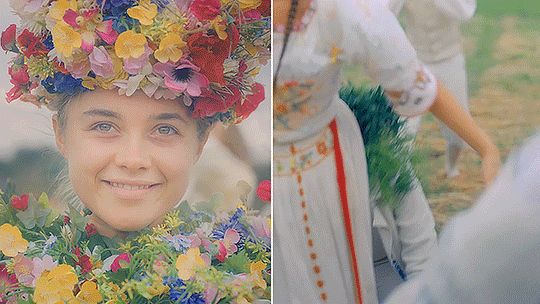
Oh, but there’s one more topic we have not quite explored. The writing on the wall. And the ceilings and the tapestries and the clothes and the footwear and the decorative flourishes and the furniture and the tables and plinths and the...
For more, click on The Pelle/Dani Receipts Masterpost
236 notes
·
View notes

